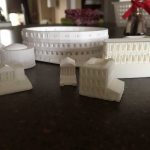
By Sara Esayas
The current Ontario high school history curriculum adequately prepares students for first-year history courses at universities in Ontario. The focus on historical concepts and developing critical thinking skills, particularly through investigating historical significance, is sufficient in preparing students for a university history course due to lectures as well as tutorial discussions often focusing on analyzing the implications of historical events in the reading material and communicating them effectively.
The Ontario high school curriculum prepares students well by teaching them how to evaluate historical events. A lot of people tend to think that success in a history course is dependent upon memorizing facts. However, the Ontario curriculum is effective in teaching students how to investigate historical events, their significance, the bias surrounding them and their consequences. This is an extremely beneficial skill set to possess in a university history course since being able to do these things to a high degree is what is expected of students.
In addition, the Ontario curriculum’s focus on the mechanics of writing is extremely important in preparing students for a first-year university course, specifically in regards to citations and proper essay format. A university history course has high expectations for citations in their essays. However, these expectations aren’t explained in detail, if explained at all. Students are expected to have prior knowledge and those who don’t cite properly are penalized. Further, Ontario’s curriculum teaches students how to write an essay specific to the course (i.e., a history essay vs. a philosophy essay) This is important because in a first-year university history course, they don’t explain how to specifically write a history essay on par with university standards. The syllabus indicates that students should have tutorials that focus on writing. However, these are taught at the discretion of the teaching assistant. In my experience, the teaching assistant made us write practice theses by ourselves and share them if we wanted to or discuss them with our peers and offered little guidance on essay writing. Therefore, it’s extremely important to teach students how to write specifically to the subject in the corresponding high school course.
Moreover, organizing history courses in a way that requires students to complete larger assignments over long periods of time is extremely helpful preparation for a university history course. This is due to the fact that it’s very similar to the breakdown of a university history course. The grades for the course are generally split up between participation/tutorial attendance (20%), two essays (45%) and a final examination (35%). Therefore, students don’t have a lot of opportunities to receive feedback. As a result, they benefit from a high school course adequately developing their writing skills and research skills prior to their entrance in a university history course. That being said, the way the Ontario curriculum is structured requiring a final exam and essay, worth a substantial amount of a student’s mark, is an effective stepping stone in preparing students for the assignments in university.
The biggest difference between high school history and university history is the material. However, the gap isn’t substantial provided that students complete their work in university. Some of the material covered may overlap with previous high school curriculum. However, larger volumes of information are presented in shorter time periods. For instance, in high school the French revolution was covered in the span of a week whereas in university it was covered in one, two-hour lecture. The depth of the material was similar but the time span was radically different. Further, the readings are very heavy and can be over a hundred pages a week which is a huge leap from the high school curriculum. Although the readings are lengthy, there are a lot of options. For example, there is a textbook, an alternate book and alternate online readings which cover the same material and give students a wide range of options to supplement and complement the readings.
Overall, a first year university history course is a jump from a high school history course, however it is manageable because students are adequately prepared.
Sara Esayas is in her first year at University of Toronto.


